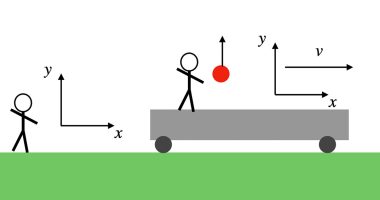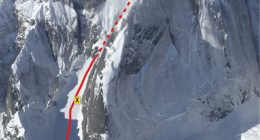THE INFAMOUS Loch Ness Monster could have been an ancient sea turtle, according to a top scientist.
Scotland’s most famous mystery creature has recently been described as a kind of undiscovered sea turtle that became trapped in the Loch.
Professor Henry Bauer’s research suggests the turtle may have become trapped in the Loch when water levels reduced at the end of the most recent Ice Age.
That time period was around 12,000 years ago.
The US scientist worked at Virginia Polytechnic Institute and State University and doesn’t believe Nessie was a dinosaur.
He thinks all the potential sightings and descriptions describe turtle-like behaviour, such as breathing air but living underwater.
Bauer is 89 and retired but has had his recent research published in a respected scientific journal, according to the Daily Record.
The publication reported that the Nessie expert believes creatures in Loch Ness are yet to be properly discovered and there could be evidence of a large unknown turtle similar to ones that live in our oceans today.
He is reported as explaining: “The most popular idea is that the Loch Ness Monster has a relationship to extinct plesiosaurs.
“But this is difficult to square with the rarity of surface sightings, let alone occasional sightings on land.
“On the other hand, everything described for Loch Ness Monsters is known among the many species of living as well as thought-to-be extinct turtles such as air-breathing but spending very long periods in deep water, ventures onto land, very fast movement in water, ability to be active in very cold water and relatively long necks.
“Loch Ness Monsters or Nessies, are a yet-to-be-properly discovered and described variety of large sea turtle that is most likely also still extant in some niches in the oceans.”
The Loch Ness Monster is Britain’s greatest unsolved mystery, with countless attempts to find the mythical beast falling flat.
Nessie was first “spotted” back in 565 AD – a biography of Irish monk Saint Columba mentions a giant “water beast” dragging a man to his death in Scotland’s River Ness.
However, wider interest in the monster was not sparked until 1933 after a road was built along the loch, making it far less isolated.
The following year saw the publication of the “surgeon’s photograph”, probably the best-known image of the creature.
In 1975 the famous shot was exposed as a hoax, made using a toy submarine with a carved monster’s head.
The vast majority of scientists agree that there’s no giant marine monster living in the lake.
Sightings have often been dismissed as being large eels and catfish or otters and deer swimming in the water, viewed from a distance.
In 2013, TV presenter Jeremy Wade made a special edition of River Monsters devoted to the legend.
He compared Nessie’s characteristics with the Greenland shark, which grow to 20 feet in length and survive in the fresh waters of the loch.
It has also been claimed that sightings of Nessie are caused by misidentifying inanimate objects – tree trunks, logs and optical effects caused by wind conditions have all been suggested.
Previous studies and analysis of the Loch have ruled out the idea of a giant creature living in the water there now.
Fact or Fiction? Famous ‘sightings’ of Nessie
The Loch Ness monster – known affectionately as Nessie – is often described as being a large animal with a long neck and usually with a hump popping out of the water.
Although the first sighting is said to have occurred in 565AD it was only in 1933 that widespread public opinion was sparked.
While scientists dismiss claims that there is some sort of prehistoric monster swimming about in the Scottish Highlands others are convinced of its existence.
Either way the story of Nessie is now firmly part of Scottish folklore.
Saint Columba
The first reported sighting of a monster is said to have been by the Irish monk St Columba in 565AD. Columba sent a man across the River Ness after stories of a “water beast” had circulated. It’s said that while the man was swimming he was approached by a beast but Columba made the sign of the cross and told the animal to “go no further”.
George Spicer
Modern day interest in the beast was largely sparked by a sighting in July 1933 by George Spicer and his wife when they claimed “a most extraordinary form of animal” crossed the road in front of their car.
Surgeon’s photograph
Perhaps the best-known picture of Nessie is the ‘Surgeon’s photograph’ which was published in April 1934, supposedly showing the animals head and long neck. According to the photographer Robert Kenneth Wilson, he managed to capture the image while he was looking at the lake. The image though was exposed as a huge hoax in the 1999 book, Nessie – the Surgeon’s Photograph Exposed.
Holmes video
Lab technician Gordon Holmes claimed he had managed to film the monster in 2007 which he described as “this jet black thing, about 14 metres (46 ft) long, moving fairly fast in the water.” Both BBC Scotland and STV aired the footage at the time which marine biologist Adrian Shine described as among “the best footage [he had] ever seen.”
In other news, a trove of ancient treasures has been found at the Egyptian archaeological site of Saqqara.
An ancient painting of a hairy, warty pig has been hailed as the oldest-known animal drawing in the world.
And, early humans may have hibernated just like bears to try and survive harsh winters.
What are your Loch Ness Monster theories? Let us know in the comments…
We pay for your stories! Do you have a story for The Sun Online Tech & Science team? Email us at [email protected]
This post first appeared on Thesun.co.uk



















